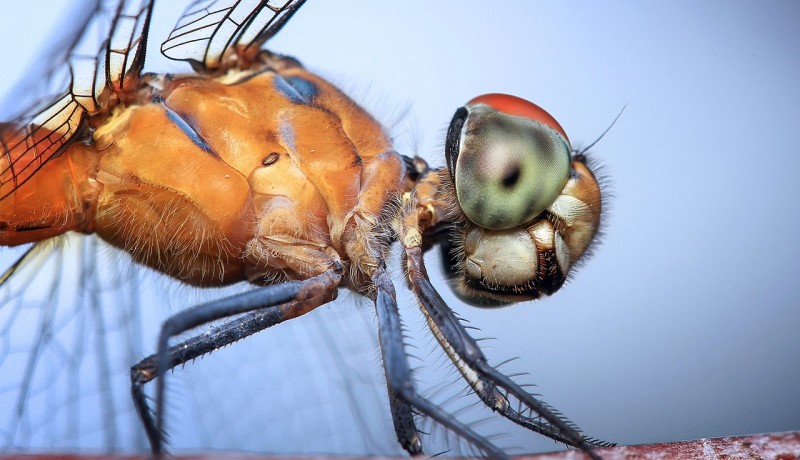Self-driving cars get help from dragonfly
July 26, 2017
on
on

Target tracking and movement prediction is something humans do without thinking but to make a computer achieve the same results requires a lot of processing power and clever programming. Self-driving vehicles must track many different kinds of objects and anticipate their movements even when they are temporarily hidden behind other objects. Although a lot of progress has been made over the past years, there is always room for improvement.
For this reason researchers from the University of Adelaide (Australia) and Lund University (Sweden) are studying a neuron they found in the brain of the dragonfly. These Small Target Motion Detectors or STMD neurons are not only active during target (prey) tracking, but they are also capable of predicting the prey’s trajectory. Not only do these neurons predict where a prey would reappear, they also traced movement from one eye to the other – even across the brain hemispheres. The neurons are also capable of adapting their sensitivity depending on ambient contrast and lighting conditions, greatly improving object detection against difficult and cluttered backgrounds.
The researchers are now trying to replicate the STMD neurons properties in a small robot to test its potential for artificial vision systems used in driverless cars.
Read the results here
Photo: public domain
For this reason researchers from the University of Adelaide (Australia) and Lund University (Sweden) are studying a neuron they found in the brain of the dragonfly. These Small Target Motion Detectors or STMD neurons are not only active during target (prey) tracking, but they are also capable of predicting the prey’s trajectory. Not only do these neurons predict where a prey would reappear, they also traced movement from one eye to the other – even across the brain hemispheres. The neurons are also capable of adapting their sensitivity depending on ambient contrast and lighting conditions, greatly improving object detection against difficult and cluttered backgrounds.
The researchers are now trying to replicate the STMD neurons properties in a small robot to test its potential for artificial vision systems used in driverless cars.
Read the results here
Photo: public domain
Read full article
Hide full article


Discussion (0 comments)